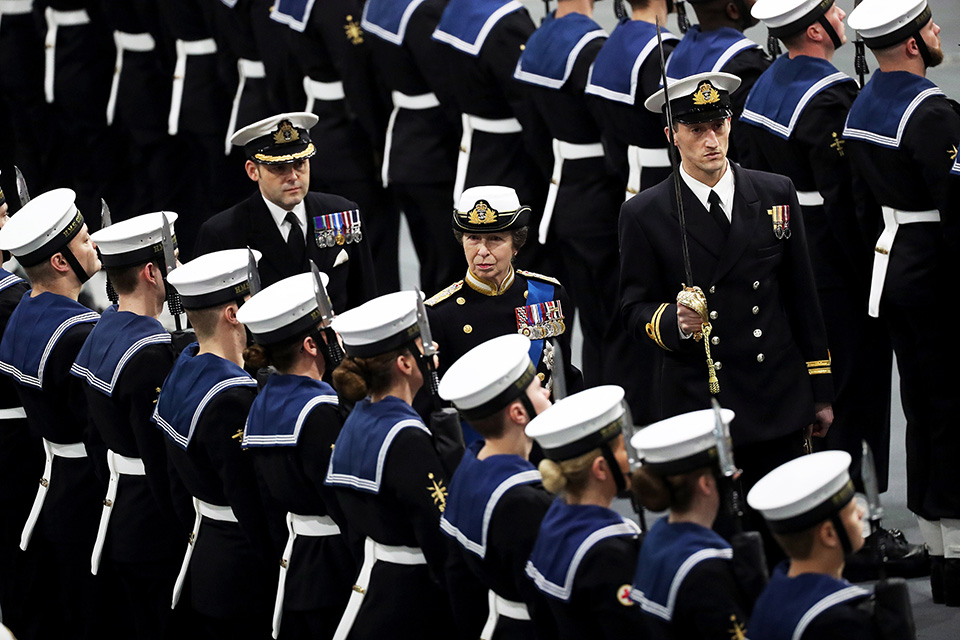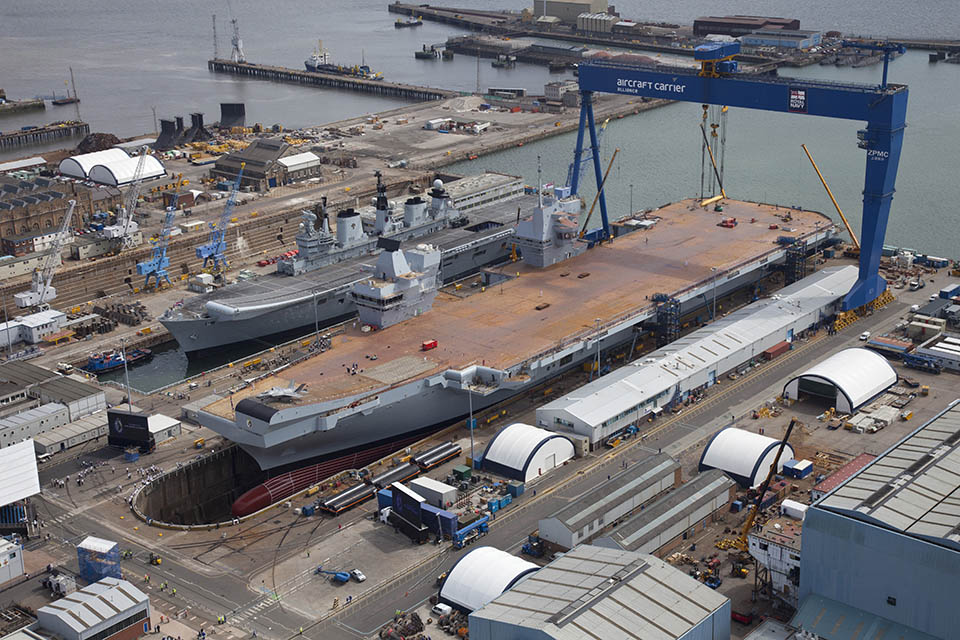His Royal Highness, a longstanding advocate of apprenticeships and getting more young people in to science, technology, engineering, and mathematics (STEM) subject areas, presented the awards at a ceremony which took place in MOD Main Building. His Royal Highness also announced the winner of this year’s MOD Apprentice of the Year in the Memorial Courtyard.
Defence Minister Harriett Baldwin said:
We are committed to investing in and celebrating the next generation of engineers, to grow our future workforce and capability in STEM far into the future.
I am delighted to see the impact our engineering apprentices have on our equipment programmes. Over 800 apprentices worked on the QE Class Carriers, and should feel a great sense of achievement today as HMS Queen Elizabeth is commissioned into Her Majesty’s fleet.
Defence is the largest employer of apprentices in the UK, with 9,000 engineering apprenticeships, and a total of 20,000 apprenticeships across a range of defence disciplines. Apprenticeships are a crucial way to develop the skills required by employers and to provide people, from all backgrounds, with the opportunity to obtain skills that will contribute to their achievement in the workplace.
Defence Minister Tobias Ellwood said:
Today’s winners should be very proud of their achievements, and the impressive skills they have developed through their apprenticeships.
The MOD is the largest employer of apprentices in the UK, supporting the Government’s commitment to achieve three million apprenticeship starts by 2020 through our range of civilian and Armed Forces schemes.
In recognition of HRH’s attendance at the MOD Engineering Apprentice Awards, the inaugural presentation of ‘His Royal Highness The Prince of Wales’s Award for Services to Defence Engineering’ was made. This was awarded to Chief Technician Rob Bates, who joined the RAF in 1995 as a Mechanical Technician Apprentice and was recognised for representing engineering within Defence by exemplary professional performance and selfless commitment to promotion of engineering as a career.
Chief Technician Rob Bates, winner of His Royal Highness the Prince of Wales Award for Services to Defence Engineering Award, said:
Today has been the stand out moment of my life so far. I enjoy my work and I am humbled to be recognised for it.
Defence apprenticeships give young people the opportunity to work at the heart of some of the most important projects in the UK. Over 800 apprentices have been involved in the QE Class Carrier project, delivering HMS Queen Elizabeth, which was commissioned in Portsmouth today, and HMS Prince of Wales.
DE&S Apprentice Champion Air Marshall Julian Young said:
We in DE&S are proud of our long tradition of training the next generation of MOD Apprentices through our innovative schemes.
This strong pipeline of highly-skilled talent, who are among the brightest and the best, are central to the delivery of essential equipment and support programmes for the UK’s Armed Forces. I offer my sincerest congratulations to all today’s winners and runners up on their sterling achievements.
Each MOD engineering apprenticeship lasts three years and, after qualifying, most apprentices go on to employment across defence.
The MOD is also offering a range of apprenticeship schemes internally to existing staff in order to invest in our workforce, by providing staff with the right training opportunities to help them develop and increase their skills, gain valuable experience and achieve a recognised qualification.
The families and guests, representatives from senior management of participating business units, representatives from competition sponsors, awarding bodies, educational establishments, and local government officials attended the ceremony alongside the apprentices.
You can find out more about apprenticeships with defence here https://www.gov.uk/guidance/apprenticeship-opportunities-in-the-ministry-of-defence
List of winners
The full list of winners and their awards are as follows:
His Royal Highness, the Prince of Wales Award for Services to Defence Engineering
· Winner: Chief Technician Rob Bates
Apprentice of the Year 2017
· Winner: Matt Schofield
The Tom Nevard Memorial Competition
Phase 1 – Individual Design and Manufacturing
· Winner: Sarah Hughes (DE&S Devonport)
· Runner-up: Thomas Baker (DSTL)
Phase 2 – Individual Design and Manufacturing
· Winner: Thomas Diaper-Fox (DSTL)
· Runner-up: Chloe Garland (DE&S Abbey Wood)
Team Design and Manufacturing Event
· Winners: James Wiltshire (Phase 3, DE&S Abbey Wood), David Thomson (Phase 3, DM Beith), Will Robinson (Phase 2, DSTL), Kieran Stainer (Phase 2, DE&S Abbey Wood), Chloe Stephens (Phase 1, DE&S Abbey Wood).
· Joint runner-up: Ashley Conlon (Phase 3, DE&S Abbey Wood), Zachary Hall (Phase 3, DSTL), Ashley Biginton (Phase 2, DM Gosport), Thomas Hill (Phase 2, DE&S Abbey Wood), Chris Nowell-Smith (Phase 1, DE&S Devonport).
· Joint Runner-up: Ewan Walker (Phase 3, DSTL), Joseph Samways (Phase 3, DM Gosport), Stacey Bishop (Phase 2, DE&S Devonport), Hewlett (Phase 2, DE&S Abbey Wood), Oliver Nicholas (Phase 1, DE&S Abbey Wood).
Sir Henry Royce Memorial Foundation Medal
· Winner: Luke Worrall (DM Gosport)
QinetiQ Awards
First Year Mechanical Manufacturing Engineering Apprentice of the Year
· Winner: Oliver Kemp (DSTL)
First Year Electrical Engineering Apprentice of the Year
· Winner: George Sweeney (DSTL)
First Year Electrical Engineering Apprentice of the Year
· Winner: Cameron Fitze (DSTL)
IET Local Network Award for Student Excellence
· Winner: Zachary Hall (DSTL, Southern Region)
East Kilbride Group Training Association – Chairman’s Award 2017
· Winner: Sam Rennix (DM Beith)
Glasgow and Clyde Campus Apprentice of the Year 2017
· Winner: Russel Vincent (DM Beith)
DIO Sustainability Recycling Challenge
· Winner: Declan Heard (Phase 1, DE&S Devonport), Lawrence Parker (Phase 1, DE&S Devonport), Sarah Hughes (Phase 1, DE&S Devonport), Chris Nowell-Smith (Phase 1, DE&S Devonport)
Babcock Land Division Excellence Awards Apprentice of the Year
· Winner: Joe Sayce (Babcock DSG Donnington)
· Winner: Sarah Malkin (Babcock DSG Donnington)

